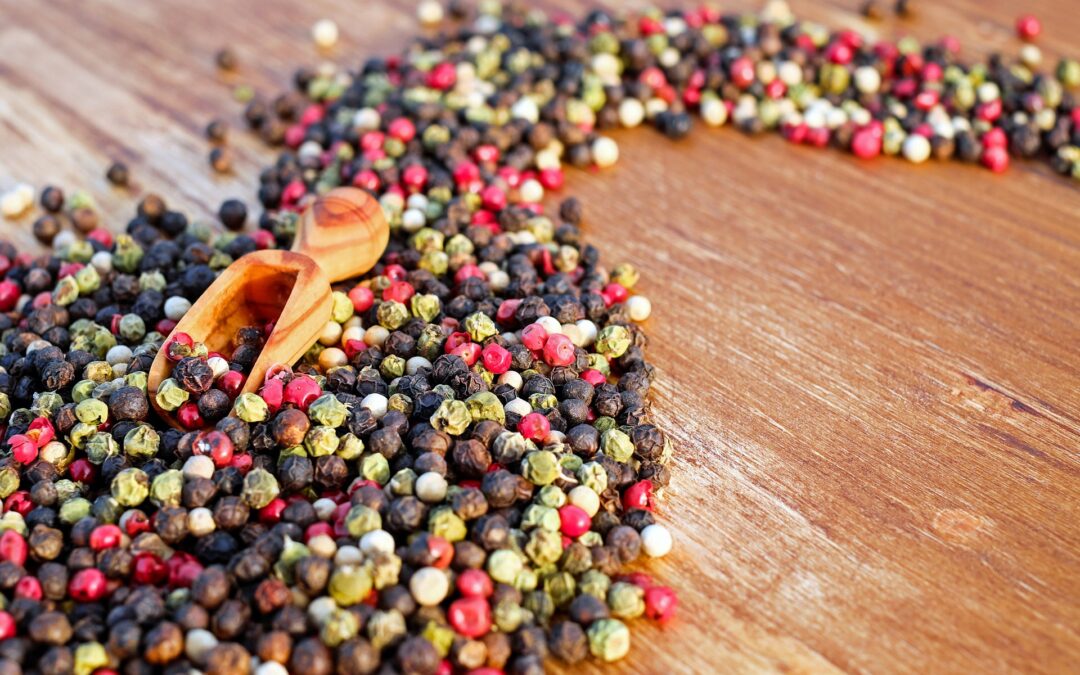After moving to Cambodia 8 years ago, we finally settled in the southern provinces of Kep and Kampot. We live on a mango farm surrounded by pepper plantations. You may well know, Kampot Pepper is regarded as some of the best in the world. I had never before seen these spicy, little berries up close, and it piqued my interest. So, are peppercorns good for you, and what do we really know about them? This could get spicy!
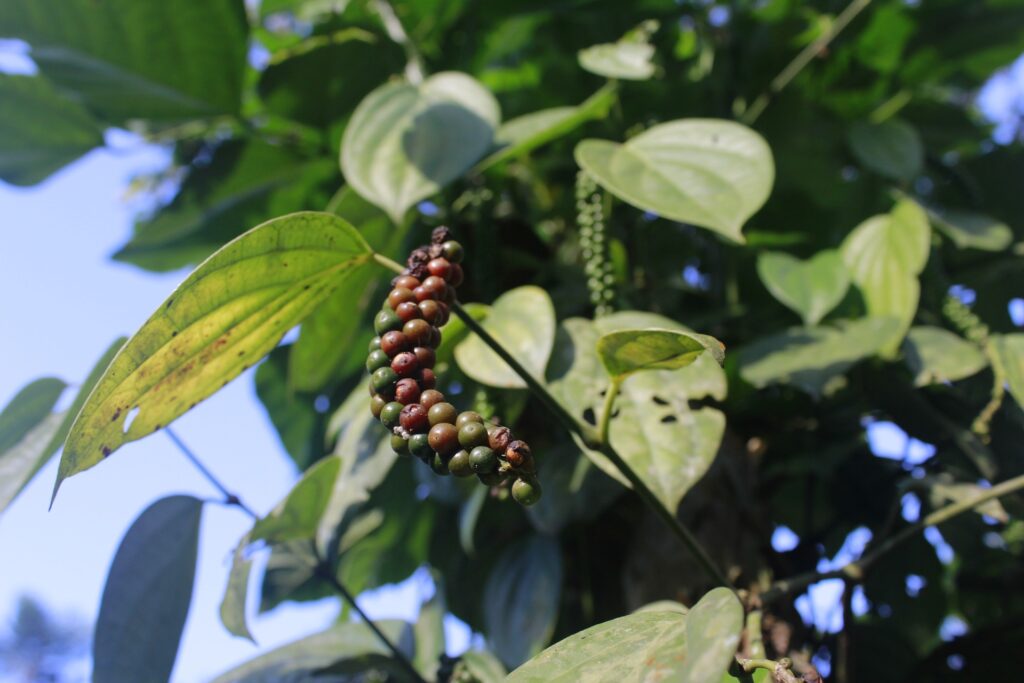
Pepper – Origin and History
Pepper (piper nigrum) originates from the Malabar Coast, a tropical region on the west coast of Southern India. It is actually a fruit with a single seed in the middle. The peppercorns are referred to as berries, and they grow on a vine supported by long wooden poles. The pepper vine thrives in a tropical climate. It needs heat and moisture, and furthermore, fertile soils with good drainage.
Pepper, hailed as the “king of spices”, first gained global attention back in the late 1400s. A Portuguese explorer, Vasco da Gama, was the man responsible. He was the first European to reach India by sea, docking in Calicut, Kerala on the 14th of May, 1498. It opened up an important trading route for pepper, also giving the Portuguese a secure monopoly over the spice trade.
Some of the finest pepper is grown in southern India and Sri Lanka. Southeast Asia is also home to some of the finest pepper in the world. As mentioned before, Kampot in southern Cambodia is world-renowned. However, it is Vietnam that is one of the largest producers of pepper worldwide. Other major producers include Indonesia, Brazil, Malaysia, India, Sri Lanka, and also China.
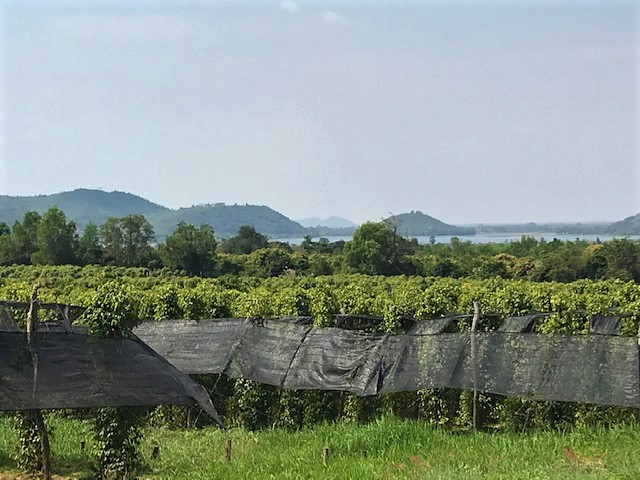
Types of Peppercorns – Are Peppercorns Good for You?
There are 5 different types of peppercorns. Black, red, green, white, and pink. All of them, except the pink, grow from the same vine. The pink peppercorns are the dried berries of a south American tree. Let’s have a look at them individually, and also let’s see if peppercorns are good for you!
Black Peppercorns
Black peppercorns come from unripe green peppercorns. The green pepper spikes are picked and then left out in sun to dry. This usually takes about 3 to 4 days. The weather must be hot and dry and the peppercorns must be laid out as thin as possible. Furthermore, they must also be raked during this time. This process will guarantee that they all dry evenly.
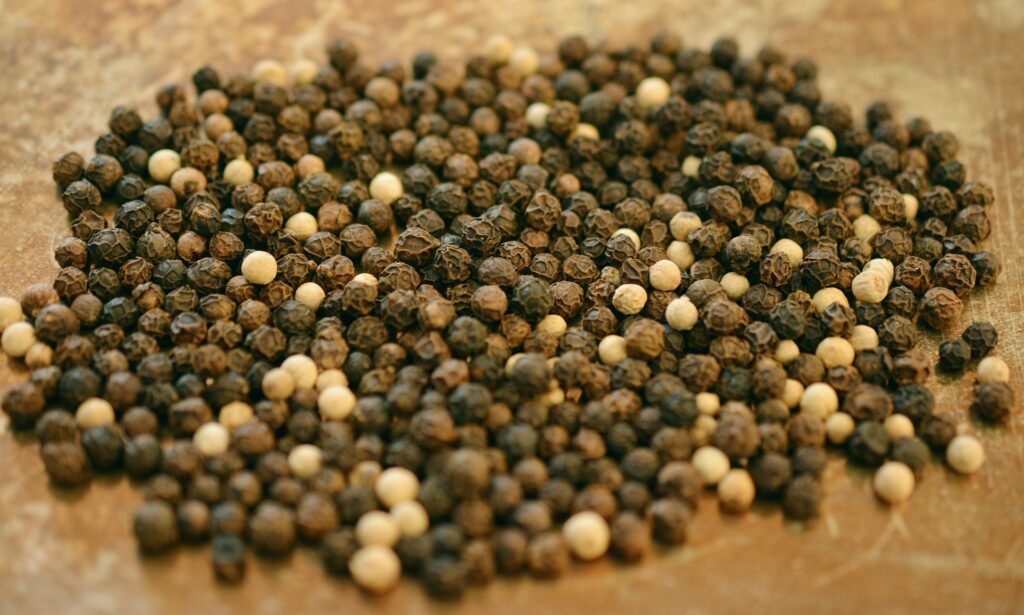
The Red Ones
Red peppercorns are the red berries that have ripened on the vine and still retain their red color. After they have been picked they are also dried, and consequently, a majority of them will darken, yet will still hold a reddish hue.

White Peppercorns
White peppercorns are made from berries that are picked at full ripeness. They are then soaked in water to ferment. From here, the outer skins are removed leaving only the inner seed. Because the skin has been removed, they tend to lose some of their flavor. and as a result, are a touch milder than their black counterparts. The white pepper is also the most expensive, due to its added labor in removing the skins.
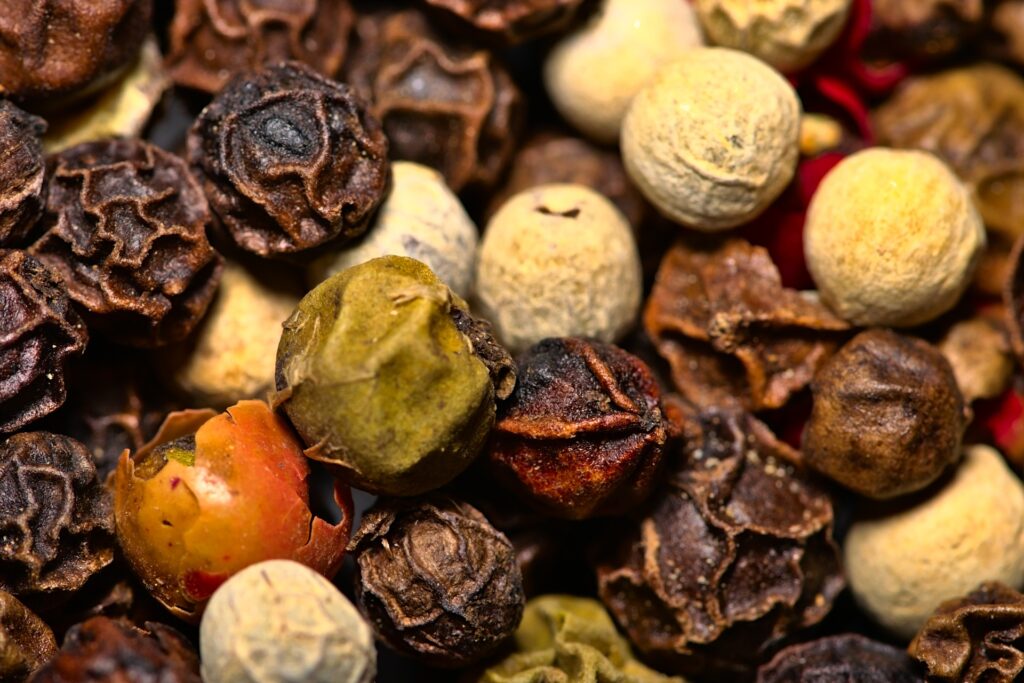
The Green Ones
Green peppercorns are the same as black ones. However, they are dehydrated instead of drying in the sun and then usually stored in brine or pickled. This is important as they can perish very quickly. When eaten fresh they possess an earthy, fresh picked herb flavor. They still have a peppery bite, but are less intense than the black ones.
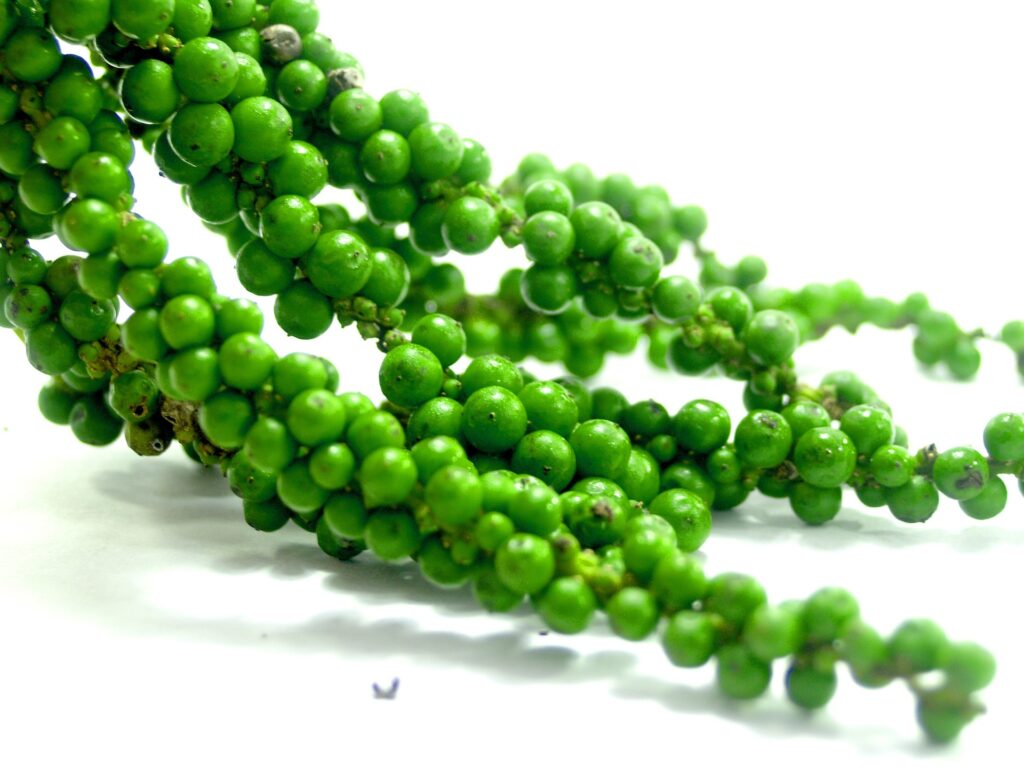
Pink Peppercorns
Pink peppercorns are not actually peppercorns, yet have been marketed as such. They hail from the Peruvian Pink Peppertree (Schinus molle) and also from the Brazilian Pepper Tree (Schinus terebinthifolius). Instead of a vine, they grow on a beautiful, flamboyant tree. They still possess a peppery flavor, and more interestingly, they are a member of the cashew family.

Health Benefits of Peppercorns
The health benefits of peppercorns have been well documented over the internet. Piperine, the active component, is an alkaloid that gives black pepper (Piper nigrum) its pungency. It is slightly soluble in water and very soluble in alcohol. Piperine has a long history of use in some types of traditional medicine, and presently, its primary commercial use is in modern herbal medicine.
Below is a list of benefits that peppercorns may possess…….
- Contains anti-inflammatory properties.
- Black pepper is rich in a plant compound called piperine, which is found to have potent antioxidant properties.
- May lower cholesterol levels. It is believed to boost the absorption of potential cholesterol-lowering supplements.
- May help with blood sugar control.
- Test on rodents has proven that black pepper contains an active compound that slows the replication of cancer cells, however, this has not yet been tested on humans.
- Drinking a black pepper based beverage can suppress your appetite, hence, good for weight loss.
- It may have anti-bacterial properties. The spice could be a powerful ingredient for future therapies against both infectious diseases and foodborne pathogens.
- There has been also research that suggests black pepper may help boost nutrient absorption, as well as display prebiotic-like behavior, helping regulate intestinal microbiota and enhance gastrointestinal health.
- Can aid in boosting brain function. Researchers have found that Piperine helped improve the memory in rats.
- Pepper is rich in both vitamins A and C. Black Pepper also has a very high caffeine content.
For thousands of years, folk and traditional medicine have incorporated black pepper and piperine into their medicines. Although much of the research on the health benefits of pepper have been carried out on animals, it is promising and warrants additional studies on humans.
In Conclusion – Are Peppercorns Good for you?
So, next time you pick up the pepper grinder, think before you grind! What takes up the centerpiece on the table, actually has quite a history and hopefully, as suggested, many health benefits. If you are ever coming to Kampot, southern Cambodia you must visit some pepper plantations. Below are a few of my favorites, links provided……
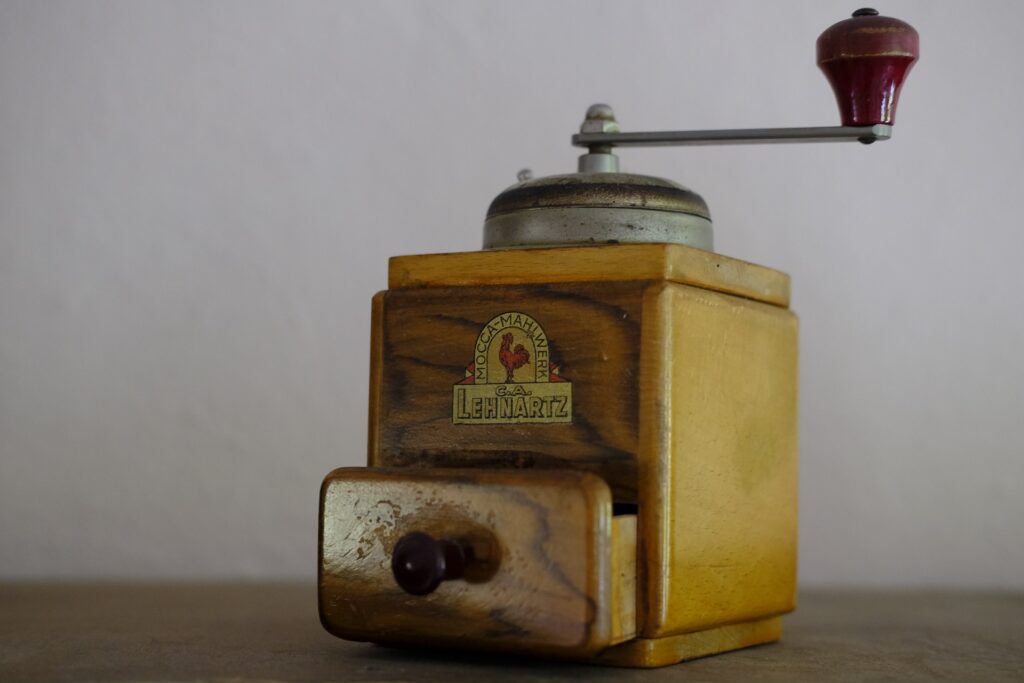
Thanks for visiting Mangoes and Mandalas. You can follow us on Instagram here and check out our other stories here.
Are Peppercorns Good For You?
GRIND AWAY!


